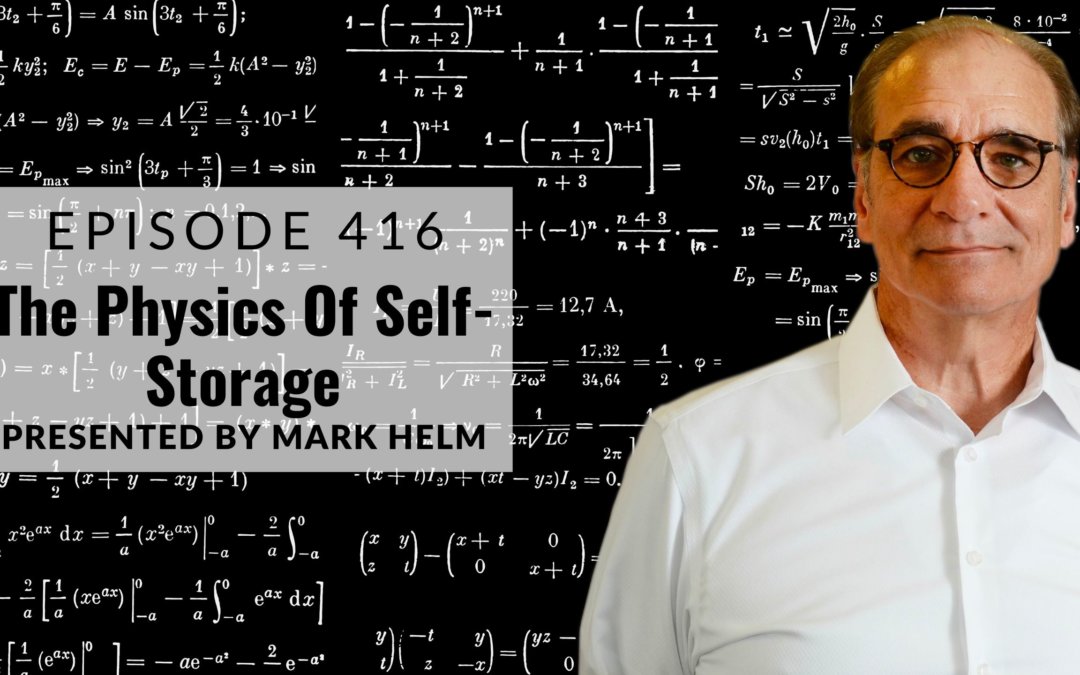Let’s talk about the physics of self-storage today.
One of my passions is studying physics. Particularly theoretical physics at the quantum level. It’s mind-blowing, fascinating, and can also be very spiritual.
Sir Isaac Newton really began much physics as we know it today. We still use “Newtonian Physics” as we look into the night sky and develop theories and test them concerning the unfoldment of the physical universe we can see with our eyes.
But in the early 1900s, as science evolved and we were able to begin exploring physics at the atomic and subatomic level, the laws of Newtonian physics, which works so well at large scales, totally fell apart and could not be applied.
Ever since then, scientists have been working to develop a unified theory that can combine both Newtonian Physics and Quantum Mechanics (laws of physics that work at the subatomic level).
Who would have thought it? Perhaps self-storage is a way to unify them.
Newtonian Physics Applied to Self-Storage
I had no idea, but REITs must have physicists on their payroll.
They have successfully figured out how to apply Newton’s First Law of Motion:
“A body at rest remains at rest … unless acted on by an external force.”
When I had 10 x 10s at $149 a month in a facility I was a partner in and a REIT opened up a few blocks from me and offered their 10 x 10s at $70 per month, first three months free, I didn’t realize it, but that was self-storage physics at work.
They understood that once someone moved in, their stuff would stay put unless acted upon by an outside force.
Usually, it takes a lot of economic incentive to generate enough force to act upon the “stuff” “at rest” in a storage unit.
How much economic force?
Well today, REITs are averaging according to the data I received at the most recent ISS convention, 15% to 30% price increases every 4 to 5 months.
They will conduct detail-controlled experiments to come up with the best “ECPI” (existing customer price increase) algorithm.
In controlled scientific experiments, we usually don’t ponder the “right” and “wrong” of the data being observed. We leave that to the philosophers.
I engage in a lot of philosophical pontifications in these episodes.
In this episode, it is all science. No rants.
Perhaps we should take advantage of Newton’s First Law of Physics more when we are in lease-up. If possible, put a physicist on your payroll.
The REITs have successfully learned to apply Newton’s First Law of Motion to increase profits.
The Observer Effect
In a laboratory in 1927, two scientists discovered something weird that forever altered science.
That was the first “double-slit experiment.”
They were using light particles, but we have since learned any particle acts the same way.
They were sending light photons through a piece of cardboard-like material with two slits and a flat-screen behind the double slits.
They were measuring the wave patterns.
Wave patterns look like waves in water with peaks and bottoms. They were measuring the crest between them.
Keep in mind that wave patterns from particles are energy. It was “known” at the time that light was energy.
These two scientists wanted to see which particles were going through which slits. So, they set up a device to measure it.
Something strange happened.
Instead of waves on the screen, they saw dots. Dots like a shotgun would leave.
Keep in mind dots mean matter, not energy.
They thought they made a mistake, took the measuring device away, and….you guessed it…waves.
Put the measuring device back…you guessed it…particles.
This experiment has been reproduced thousands, not hundreds of thousands, of times with the exact same result.
Physics has never been the same. This means lots of things, but here are two:
- Observing and measuring something affects the results (the “Observer Effect”).
- When consciousness is present (the “observer”), energy collapses into matter (the Wave Function Collapse”).
We will just deal with the Observer Effect and how it applies to self-storage.
If you want to have an effect on some aspect of your business, measure it.
I started by trying to figure out the value of a customer so I could measure it.
I figured out that my operating system would tell me the average length of stay per customer, and it was easy to figure out my average unit rent. I took the monthly GPI (gross potential income and divided it by the number of units I had).
Just like in 1927, something weird happened.
The average value of a customer started to go up.
Now, it might not totally be from observing, but observing made me acutely aware of how a 2% or 3% increase would up the average value of a customer.
Here is the data for one facility:
Year 1 start: Average length of stay: 42.93 months
Year 3 end: Average length of stay: 48.36 months
Year 1 start: Average value of a customer: $5,094.54
Year 3 end: Average value of a customer: $5,571.78
If you want to impact something in your self-storage business, start measuring it.
By measuring something, you have an impact on it.
Who knew that self-storage could be the way to unify Newtonian Physics and Quantum Physics?
This is another example of how self-storage is the best business in the world.
Perhaps someday, we can have an episode on the philosophical implications of these self-storage laws of physics.
But today, I will end with a classic physicist response when scientists contemplate the total strangeness of quantum physics and ask what it could mean.
The saying goes, “Just shut up and just measure.”
You don’t have to shut up, but just keep measuring all aspects of your self-storage. Business.




This was a fun read. Thx Mark!